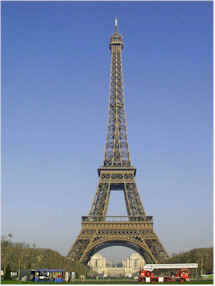Internal
Links
Top
|
|
External
Links
|
|
Link
|
- Video: Culture |
Link
|
| |
- Project: Identifying
a Culture |
Link
|
| |
- Project: The Intersections
of KBVN |
Link
|
| |
- Project: Real & Ideal
Culture |
Link
|
| |
- Project:
Video: What Is Culture? |
Link
|
|
|
- Project:
Video: The Social Orgs of Culture |
Link
|
|
Link
|
- Video: Romeo &
Juliet |
Link
|
| |
CULTURE IS THE SHARED KNOWLEDGE, BELIEFS, VALUES, NORMS ( K B V
N ) & THE PHYSICAL & ABSTRACT MANIFESTATIONS OF THAT CONTENT |
|
| |
All societies have a culture |
|
|
|
Culture may be defined as the shared content of society |
|
| |
The FOUR components of culture are knowledge, beliefs, values, norms
( K B V N ) |
|
|
|
The four components of culture are physically manifested through symbols
& language |
|
|
|
Symbols are defined as anything that carries a particular meaning recognized
by people who share culture |
|
|
|
The meaning of the same symbols varies from society to society, w/in
a single society, and over time |
|
|
|
Culture is the shared set of meanings that are lived through
material
& symbolic practices, & the socially created
objects
of
everyday
life |
|
| |
Do not confuse the common usage of the word "culture" w/ the sociological
use |
|
| |
People commonly use culture to mean society &/ subculture &
this usage would include both culture ( KBVN ) & social structure (
PF REG M CEML ) |
|
| |
THE EXPRESSION OF CULTURE IS ACCOMPLISHED IN MANY WAYS INCLUDING
LANGUAGE, ART, RELIGION, CUSTOMS, & MORE |
|
| |
When examining culture, KBVN are often expressed in SEVEN configurations
Roles
Language
Technology
Customs
Material Objects
Religion
Groups of People |
|
|
|
Culture shock refers to personal disorientation when experiencing an
unfamiliar way of life |
|
|
|
Only humans depend on culture rather than instincts to ensure the survival
of their kind |
|
| |
Culture is a long time in the making |
|
| |
Culture can be a constraint in that humans cannot live w/o culture,
but the capacity for culture has some drawbacks |
|
| |
Culture can be a source of freedom in that culture forces us to choose
as we make & remake a world for ourselves |
|
|
|
The social sciences carry out 'cultural mapping,' i.e. a cataloging
of the various aspects of culture throughout societies |
|
| |
THE SOCIAL SCIENCES EXAMINE VARIOUS ASPECTS OF CULTURE |
|
| |
1. Sociologists examine how cultures are created &
maintained in modern society & how culture impacts social structures
& personality |
|
| |
2. Anthropologists examine how cultures are created &
maintained in ancient &/ indigenous societies |
|
| |
3. Geographers examine how place & space shape culture
& vice versa & how culture is organized spatially |
|
| |
4. Psychologists examine how the subconscious is manifested
in culture |
|
| |
5. Political scientists examine how culture affects govt
& the political process |
|
| |
Sociologists generally accept TWO human manifestations of culture:
material & non material culture which occur in the TWO settings of
the physical environment & the human environment |
|
| |
All the levels meld into one seamless culture:
1. Material culture
a. Material culture & the
physical environment
b. Material culture & the
human environment
2. Non material culture
a. Non material culture &
the physical environment
b. Non material culture &
the human environment |
|
| |
1. MATERIAL CULTURE IS MANIFESTED IN OBJECTIVE REPRESENTATIONS
OF KBVN |
|
| |
a. MATERIAL CULTURE IS MANIFESTED THROUGH THE PHYSICAL ENVIRONMENT |
|
| |
The physical environment includes the "natural" environment as well
as human made rural landscapes, city-scapes, etc. |
|
| |
Even the physical environment in which we live comes to be identified
as a representative of our material culture & the environment does
shape our KBVN |
|
| |
Usually different regions have a cultural attachment to their environment |
|
|
Link
|
Examples of material culture & the physical environment |
|
|
Link
|
b. MATERIAL CULTURE IS MANIFESTED THROUGH THE HUMAN ENVIRONMENT |
|
|
Link
|
1) World symbols: An example of a world
symbol is the UN Building or the Earth picture |
|
|
Link
|
2) National symbols: a nation's flag |
|
|
Link
|
3) Regional symbols: race car |
|
|
Link
|
4) Homes/ businesses styles: ranch
home, mobile home |
|
|
Link
|
5) Cars, boats etc. styles: SUV, mini
van, sports car, etc. |
|
|
Link
|
6) Clothing styles: woman in a black
dress, men in black |
|
|
Link
|
7) Body shape / style: body art |
|
| |
2. NON MATERIAL CULTURE IS MANIFEST IN SUBJECTIVE, ABSTRACT,
IDEOLOGICAL, ETC. REPRESENTATIONS OF CULTURE |
|
|
Link
|
Non material culture is manifested in abstract representations of KBVN |
|
| |
a. KNOWLEDGE IS MANIFESTED / DEMONSTRATED IN & BY CULTURE |
|
|
Link
|
Knowledge is shared truth based on science |
|
| |
Examples of cultural manifestations of knowledge are Darwin fish symbols,
Stanford T-shirts, math symbol jewelry, tech gear & the very ideas
these symbols represent |
|
| |
b. BELIEFS ARE MANIFESTED / DEMONSTRATED IN & BY CULTURE |
|
|
Link
|
Beliefs are shared truth based on tradition, religion, instinct, emotion,
common sense |
|
| |
Knowledge & beliefs are like two intersecting circles w/ mutual
& exclusive content |
|
| |
Examples of cultural manifestations of beliefs are Christian fish symbols,
Jesus T-shirts, Crescent Moon jewelry, religious dress, & the very
ideas these symbols represent |
|
| |
c. VALUES ARE MANIFESTED / DEMONSTRATED IN & BY CULTURE |
|
|
Link
|
Values are shared personal judgments/preferences about what is considered
good/bad, like/dislike that serve as broad guidelines for social life |
|
|
Link
|
Core American values have an ideal & a real Aspect;
See the Table on
the Ideal & Real Aspects of Core American Values |
|
| |
Ideal values are those that actors hold "patriotically," or
rhetorically, that actors believe that they hold |
|
| |
Real values are those that actors actually practice; when faced
w/ a "situation," actors show their real values |
|
| |
The concept of real values can be seen in the fact that Americans
have the core cultural value of democracy, but fail to vote |
|
| |
d. NORMS ARE MANIFESTED / DEMONSTRATED IN & BY CULTURE
THROUGH FOLKWAYS, MORES, LAWS, ETC. |
|
|
Link
|
Norms are shared expectations about behavior, i.e. socially defined
rules |
|
| |
i. Folkways are informal, minor norms that usually
carry only minor & informal sanctions, or punishments, when they are
violated |
|
|
|
Example: Manners |
|
| |
ii. Mores are informal norms, that are very important
to people & may be written into law |
|
| |
Example: People should not talk loudly in religious buildings |
|
| |
iii. Laws are formal, codified norms which everyone is expected
to be aware & which carry specific, legal sanctions |
|
| |
Example: driving regulations |
|
| |
Western cultural practices are exported by the media to remote corners
of globe
Paul Harvey: Yet this is not “one world” |
|
| |
INTERSECTIONS OF KBVN OCCUR AS A RESULT OF SOCIALIZATION & LIFE
EXPERIENCES, & VARY WIDELY RESULTING IN INFINITE MANIFESTATIONS OF
CULTURE |
|
|
Link
|
Culture's components of K + B + V + N, have limited intersections |
|
| |
Knowledge & beliefs are like two intersecting circles w/ mutual
& exclusive content |
|
| |
WI Thomas on truth.... & culture: 'What we believe
to be true, becomes true in its consequences' |
|
| |
Examples: men are buffoons
Cuban Missile Crisis: the Russians are offering a way out / the
Russians are holding a hard line
A clique believing someone is cool |
|
|
Link
|
We each have conflicting views on KBVN AOI
which often create anxiety, cognitive dissonance, etc. on an individual
level and conflict, strife, war, etc. on a societal level |
|
|
Link
|
Non material culture & the physical environment can be seen
is the aesthetic question: "What is the meaning of wind whispering
in trees to your culture?" |
|
|
Link
|
Non material culture & the human environment can be seen
is the aesthetic question: "What is the meaning of a veiled face?
of green hair?" |
|



